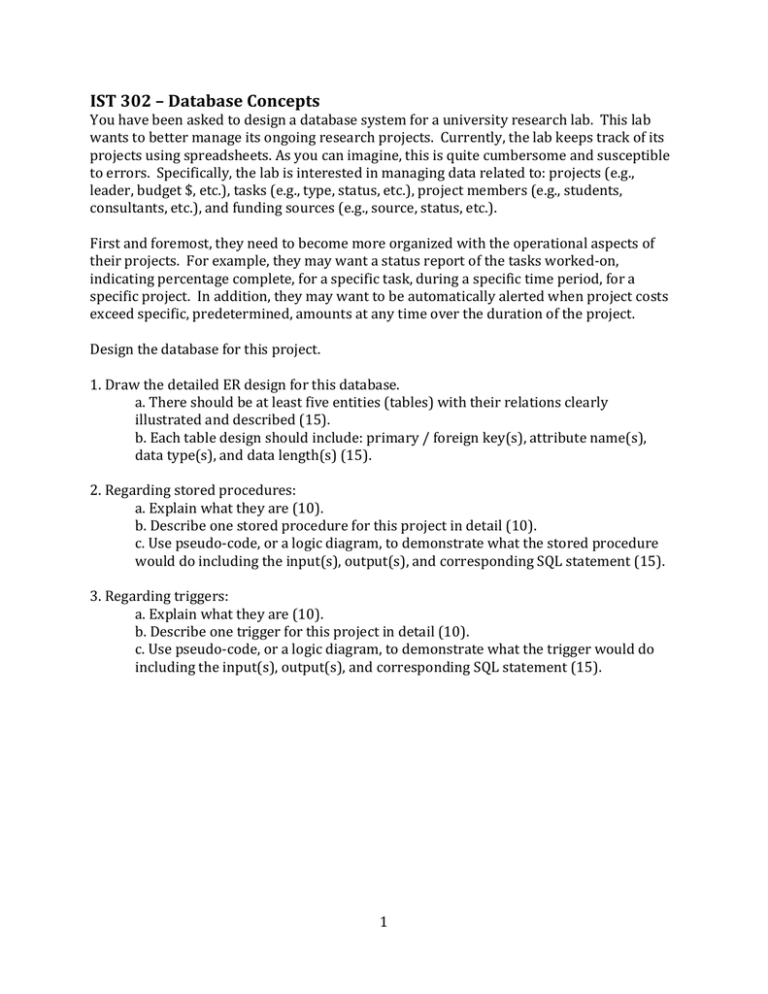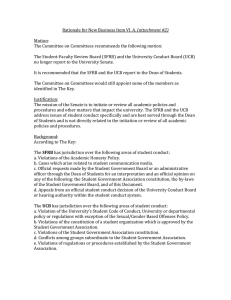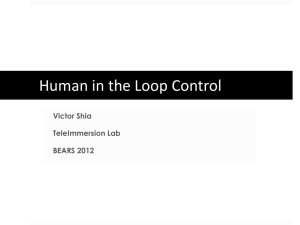Document 14567635
advertisement

IST 302 – Database Concepts You have been asked to design a database system for a university research lab. This lab wants to better manage its ongoing research projects. Currently, the lab keeps track of its projects using spreadsheets. As you can imagine, this is quite cumbersome and susceptible to errors. Specifically, the lab is interested in managing data related to: projects (e.g., leader, budget $, etc.), tasks (e.g., type, status, etc.), project members (e.g., students, consultants, etc.), and funding sources (e.g., source, status, etc.). First and foremost, they need to become more organized with the operational aspects of their projects. For example, they may want a status report of the tasks worked-­‐on, indicating percentage complete, for a specific task, during a specific time period, for a specific project. In addition, they may want to be automatically alerted when project costs exceed specific, predetermined, amounts at any time over the duration of the project. Design the database for this project. 1. Draw the detailed ER design for this database. a. There should be at least five entities (tables) with their relations clearly illustrated and described (15). b. Each table design should include: primary / foreign key(s), attribute name(s), data type(s), and data length(s) (15). 2. Regarding stored procedures: a. Explain what they are (10). b. Describe one stored procedure for this project in detail (10). c. Use pseudo-­‐code, or a logic diagram, to demonstrate what the stored procedure would do including the input(s), output(s), and corresponding SQL statement (15). 3. Regarding triggers: a. Explain what they are (10). b. Describe one trigger for this project in detail (10). c. Use pseudo-­‐code, or a logic diagram, to demonstrate what the trigger would do including the input(s), output(s), and corresponding SQL statement (15). 1 IST 303 – Software Development The set of well-­‐known agile software development methods includes the following three methodologies: Crystal family of methodologies, Feature Driven Development, and Adaptive Software Development. Discuss two of these methodologies, explaining: 1. How is it done, in terms of process, activities, practices, scope of work. (50; 25 per methodology) 2. The kinds of projects for which it should it be/should not be used. (30; 15 per methodology) 3. Whether it can be combined with agile methods such as XP and Scrum. (20; 10 per methodology) Reminder: Each of these answers needs to contain discussion of the same two methodologies. 2 IST 304 – Communications & Networking Study the following diagram carefully. Site 1 has been given an IP address of 192.43.2.0/24 and Site 2 has been assigned 202.33.1.0/24. These 2 sites belong to same organization and they connect via Level 3 ISP backbone whose IP address is Class A 4.1.0.0. Now answer the following questions. 4.1.0.0 Level3 ISP Backbone Site 1 Site 2 202.33.1.0/24 192.43.2.0/24 R1 R4 C1 net4 net1 R5 R2 net2 net5 R3 net3 Server 1. On Site 1, network 1 will have 112 hosts; network 2 will have 60 hosts while network 3 will have 18 hosts. On Site 2, both networks 4 and 5 will have 60 hosts each. Using CIDR subnet masking, first assign addresses to each of the 5 networks. Then assign addresses to all routers, client C1 and Server. [You may create a table with columns such as # hosts, network, CIDR mask, first valid address, last valid address.] (50) 2. Client C1 sends an http message to Server on net 3. How many ARPs will take place in this transmission? (10) 3. Answer either one of the following questions (40): a. Site 1 is using RIP for route propagation. Show with brief examples how each router knows about the existence of other routers. [Remember RIP uses hop count as a metric.] OR b. If R1 and R4 set up a VPN tunnel through ISP, what would the routing table of R1 look like? [Hint: Routing tables have destination network and next hop info.] 3 IST 305 – Management of IS&T Complexity is one of the salient hallmarks of the 21st century. Researchers suggest that coping with the complexity of today's business environment is not about predicting the future; it's about building capacity. Companies can create value from complexity, but they can’t sustain it without promoting process and infrastructure simplification. 1. Discuss the interplay between complexity and simplicity in the practice of IT management. (45) 2. Simple infrastructures may result in complex behaviors because they facilitate and encourage rich and mindful interactions. Do you agree? Explain using one or more examples from IT management practice. (30) 3. Given the challenges described above, a key role for IT Management is to build agile organizations where individuals deal well with ambiguity and enable improvisation. Provide three simple rules to reinvent IT management practices accordingly to this trend. (25) 4 IST 306 – Delivering Value Through IS&T Leadership When Herman De Prins became CIO of UCB, the $4.2B pharmaceutical company (see brief company description below), he had been reading articles that declared that IT no longer matters, that cloud and digital technologies threaten to push IT to the margins, and that IT organizations would shrink by 25 percent by 2017. “It was clear to me that IT organizations that fail to find new ways to provide value will lose their edge and become obsolete,” says De Prins. “I knew that if we stuck to traditional IT at UCB, we would be in a negative cycle of cost cutting and reducing relevance.” De Prins designed a program, “The Future of IT,” to give his IT organization and its business partners real clarity about the role of IT going forward. 1. To initiate the program, De Prins established a pragmatic road map, describing: “What does this new world of technology mean for IT, for UCB and for its stakeholders?” Offer three pillars that De Prins should embed into his roadmap and explain the value that UCB can get out of each. (50) 2. Dr. Thielgen, Chief Financial Officer of UCB responded to De Prins’s program: "There is so much confusion about IT value in the company. Therefore, The CIO of UCB needs to establish a disciplined approach to capital allocation, achieve visibility and control of the investments, and show value for money.” Advise De Prins on how to respond to Thielgen's concerns. (50) About UCB UCB aspires to transform the lives of people living with severe diseases, with particular emphasis on central nervous system and immunology disorders. The company is passionate about innovation – particularly with regard to medicines that help people with severe diseases lead more normal lives. Each year, the firm invests more than 25% of revenue in cutting-edge scientific research to help achieve unmet patient needs. UCB has more than 8500 employees in nearly 40 countries, and is headquartered in Brussels, Belgium. 5




